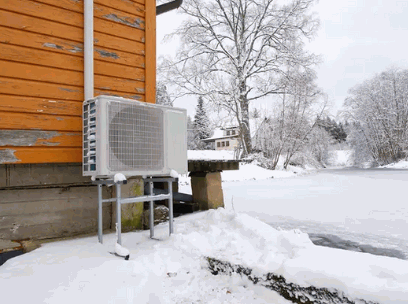Curious about air source heat pumps and their efficiency in winter?
We break down what an air source heat pump is, how it works, and the benefits it offers like energy efficiency, cost savings, and environmental friendliness.
We also explore drawbacks such as initial costs and noise levels.
Learn how air source heat pumps perform in winter, including factors like COP, heating capacity, and backup heating systems.
Get tips on improving efficiency through proper sizing, maintenance, insulation, and utilizing backup heating.
Stay tuned for all the details!
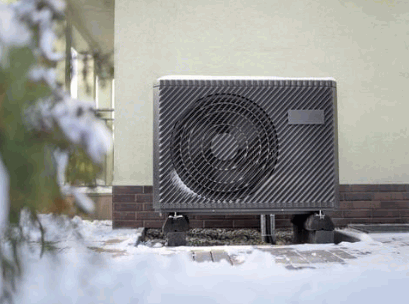
What Is An Air Source Heat Pump?
An air source heat pump (ASHP) is a highly efficient heating and cooling system that extracts heat energy from the outside air and transfers it indoors, or vice versa, to provide both heating and cooling for residential and commercial buildings, following standards set by Energy Star and the DOE.
ASHPs are versatile in that they can operate effectively even in colder climates by utilizing available heat in the air, making them a practical choice for various regions. These systems have gained significant popularity due to their energy efficiency and environmentally friendly operation. Organizations like Energy Star and the Department of Energy (DOE) provide certifications and guidelines to ensure that ASHPs meet required efficiency standards, promoting sustainable heating and cooling solutions.
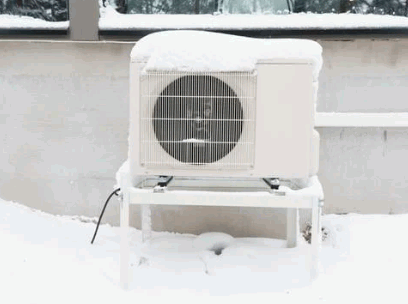
How Does An Air Source Heat Pump Work?
An air source heat pump works by using a compressor and a refrigerant loop to transfer heat energy between the inside and outside of a building, effectively converting electrical energy into usable heat energy.
The compressor in the system plays a crucial role in pressurizing the refrigerant, which then flows through the loop. As the refrigerant moves, it absorbs heat from the outdoor air and is compressed, raising its temperature. This high-temperature, high-pressure gas then passes through a condenser, where it releases the absorbed heat. The now-cooled refrigerant returns to a liquid state and is sent back to the indoor unit through an expansion valve, ready to absorb more heat energy. This continuous cycle allows the heat pump to efficiently extract heat from the surrounding air, providing warmth inside the building.
Dig deeper: What Is An Air Source Heat Pump System
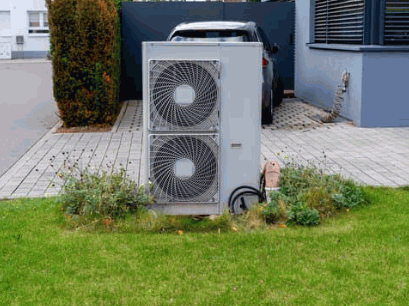
What Are The Benefits Of Using An Air Source Heat Pump?
Air source heat pumps offer several benefits, including high efficiency and significant cost savings, along with being environmentally friendly and highly versatile in various applications.
Energy Efficiency
One of the primary benefits of air source heat pumps is their outstanding energy efficiency, often measured by the Coefficient of Performance (COP), which can be enhanced by features like a variable-speed compressor and advanced inverter technology.
Understanding how the COP is calculated is essential in grasping the effectiveness of an air source heat pump system. The COP is determined by dividing the heat output by the electrical power input. In simpler terms, it signifies how much heat energy the heat pump can generate per unit of electricity consumed.
Flash injection is another innovation that has proven to boost efficiency in air source heat pumps. By injecting refrigerant vapor into the compressor, flash injection helps enhance the system's performance and capacity, ultimately resulting in improved energy savings and comfort levels for users.
Cost Savings
While the initial investment in an air source heat pump can be substantial, various financial aids such as rebates, tax credits, and both federal tax credits and state rebates can significantly reduce the overall cost.
For instance, the Energy Star Rebate Program offers incentives for homeowners to upgrade their HVAC systems to more energy-efficient models. Many utility companies provide rebates for installing energy-saving appliances, including air source heat pumps.
The Renewable Heat Incentive in some regions offers financial support to those using renewable heating technologies like air source heat pumps.
By taking advantage of these financial incentives, homeowners not only lower their initial outlay but also pave the way for long-term energy savings and environmental benefits.
Environmentally Friendly
Air source heat pumps are an environmentally friendly option that contributes to decarbonization and offers a sustainable solution to the global energy crisis.
These innovative systems work by extracting heat from the outside air, even in cold temperatures, and transferring it inside to heat spaces efficiently. This process significantly reduces the reliance on traditional heating methods powered by fossil fuels, lowering carbon emissions and promoting cleaner air quality. By utilizing renewable energy sources, air source heat pumps play a crucial role in mitigating climate change and creating a more sustainable environment for future generations.
Versatility
The versatility of air source heat pumps lies in their ability to provide both heating and cooling and to be installed in various configurations, including ducted, ductless, and mini-split systems.
These different installation options make air source heat pumps adaptable to a wide range of buildings, from single-family homes to large commercial spaces. For example, ducted systems are often preferred in new construction projects where ductwork can be integrated seamlessly. On the other hand, ductless and mini-split systems are excellent choices for retrofitting older buildings without existing ductwork. The ability of air source heat pumps to work efficiently in various climates, from hot and humid to cold and dry, further enhances their utility.
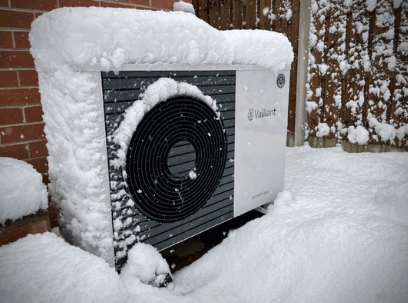
What Are The Drawbacks Of Using An Air Source Heat Pump?
Despite their numerous benefits, air source heat pumps do have some drawbacks, including a high initial cost, potential noise issues, and dependence on outdoor temperature for optimal performance.
Initial Cost
The initial cost of an air source heat pump can be high due to the significant initial investment required for the equipment, installation, and the need for skilled workers specialized in HVAC systems.
When considering the overall cost, the price of the equipment accounts for a substantial portion of the initial investment. Installation fees play a crucial role as they involve setting up the system correctly to ensure optimal performance. Labor costs, required for professional installation and maintenance services, also add to the total expenses. It's essential to assess these factors comprehensively to understand the true financial commitment of installing an air source heat pump. Taking these costs into account can help individuals make informed decisions regarding the feasibility of this eco-friendly heating solution.
Noise
Noise can be an issue with air source heat pumps, primarily due to the operation of the compressor and the defrost cycle, although modern inverter technology can help mitigate this problem.
When an air source heat pump is running, the compressor is responsible for pumping the refrigerant through the system, which can create vibrations and noise. During the defrost cycle, the heat pump temporarily switches to cooling mode, causing more noise. Advancements in technology, such as inverters, have revolutionized the heat pump industry. Inverters allow the compressor to adjust its speed based on the heating or cooling demand, leading to quieter operation. By reducing abrupt starts and stops, inverters significantly contribute to lowering noise levels produced by air source heat pumps.
Dependence On Outdoor Temperature
Air source heat pumps' performance and heating capacity can be significantly affected by outdoor temperature, especially in cold climates.
Extreme temperatures, whether hot or cold, can place a major strain on the operational efficiency and overall effectiveness of air source heat pumps. In cold climates, the system may struggle to extract enough heat from the frigid air to adequately warm the indoors. Similarly, in hot climates, the system may have difficulty dissipating heat efficiently, leading to decreased performance.
To combat these challenges, manufacturers have developed innovative technologies such as variable-speed compressors and intelligent defrost systems. These advancements help optimize the performance of air source heat pumps under extreme temperature conditions, ensuring consistent heating and cooling throughout the year.
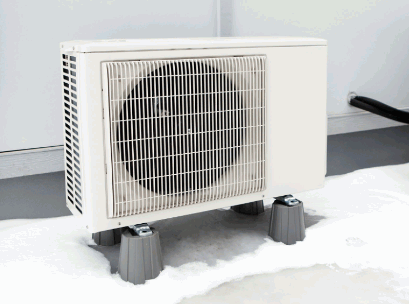
How Efficient Are Air Source Heat Pumps In Winter?
Assessing the efficiency of air source heat pumps in winter involves examining the Coefficient of Performance (COP), the specific capabilities of cold-climate heat pumps, and the need for backup heating systems to ensure consistent heating capacity.
COP (Coefficient Of Performance)
The Coefficient of Performance (COP) is a crucial metric for evaluating the energy savings and overall performance of air source heat pumps in winter.
It is calculated by dividing the heat output of the system by the electrical energy input. Essentially, the higher the COP, the more efficient the heat pump is at converting electricity into heat. A COP of 3, for example, means the heat pump provides 3 units of heat for every 1 unit of electricity consumed. This indicates a highly efficient system.
COP values can vary depending on the outdoor temperature. For instance, at mild temperatures around 50°F, COP values can range from 3 to 4.5, showcasing efficient performance. On the other hand, at very low temperatures below 0°F, COP values may drop to around 1, indicating decreased efficiency due to increased energy consumption.
Heating Capacity
The heating capacity of air source heat pumps, particularly cold-climate heat pumps, is vital for maintaining performance during the winter months.
One of the key factors that play a crucial role in determining the heating capacity of these pumps is the outdoor temperature. As the temperature drops, the efficiency and performance of the heat pump may vary, impacting its ability to effectively heat the indoor space. Cold-climate heat pumps are specifically engineered with features such as advanced defrost technology and enhanced insulation to combat the challenges posed by extremely low temperatures. These innovative technologies enable the heat pump to operate efficiently even in sub-zero conditions, ensuring optimal comfort and energy savings for homeowners.
Backup Heating System
To ensure consistent heating in extremely cold conditions, many air source heat pumps are equipped with a backup heating system, which can include electric resistance heaters or fuel-fired systems.
These backup heating systems play a crucial role in providing additional warmth when the primary heat pump may struggle to keep up with the demand during severe cold snaps. Electric resistance heaters are commonly used as backup heat sources due to their quick response time, while fuel-fired systems offer a more cost-effective alternative for prolonged use.
- Electric resistance heaters: These elements use electricity to generate heat quickly, offering a reliable solution when the temperature drops significantly. The backup electric heaters kick in automatically when the heat pump alone is insufficient to meet heating demands.
- Fuel-fired systems: Propane or natural gas-fired systems can serve as backup heating options, especially in regions where electricity costs are high. These systems provide consistent heat output, ensuring that your home stays warm even when temperatures plummet.
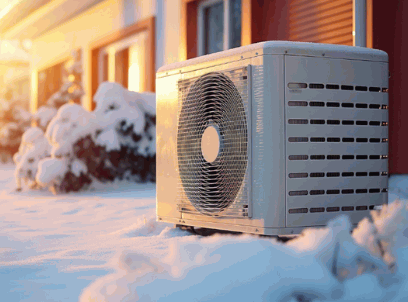
How To Improve The Efficiency Of Air Source Heat Pumps In Winter?
Improving the efficiency of air source heat pumps in winter involves proper sizing and installation, regular maintenance, effective insulation and weatherization, and the strategic use of a backup heating system.
Proper Sizing And Installation
Proper sizing and installation of the heat pump system are critical to achieving optimal performance and efficiency, requiring the expertise of skilled workers in the HVAC field.
In terms of sizing, getting it right ensures that the heat pump can efficiently heat or cool your space without overworking or underperforming. This not only impacts the comfort level but also plays a significant role in energy efficiency and cost savings.
Professional installation is equally crucial as it involves intricate steps like ductwork design, refrigerant handling, electrical connections, and system calibration. Improper installation can lead to issues such as reduced efficiency, increased energy consumption, frequent breakdowns, and even safety hazards. It's vital to entrust this task to professionals who understand the nuances of heat pump systems.
Regular Maintenance
Regular maintenance is essential for maintaining the performance and energy savings of an air source heat pump, ensuring that all components function efficiently.
One crucial task in the maintenance routine is regularly cleaning or replacing the air filters, typically once every one to two months. Clogged filters can restrict airflow, making the system work harder and less efficiently. Ensuring that the outdoor unit is free of debris, such as leaves or branches, helps to optimize its performance. Checking and cleaning the evaporator and condenser coils yearly can also prevent efficiency losses due to dirt buildup.
Insulation And Weatherization
Effective insulation andandweatherizationof the building can significantly enhance the energy savings and efficiency of an air source heat pump during winter.
Insulation acts as a barrier, preventing the escape of heat through walls, ceilings, and floors, while weatherization seals gaps and cracks that let cold air in. Combining these techniques ensures that the heat pump operates at peak performance levels, reducing the workload on the system and ultimately lowering energy costs. Properly insulated and weatherized spaces maintain consistent temperatures, reducing the need for the heat pump to continually cycle on and off, which further contributes to energy efficiency and extends the lifespan of the system.
Utilizing A Backup Heating System
Utilizing a backup heating system, such as electric resistance heaters or fuel-fired systems, can provide additional warmth and ensure reliability during extremely cold weather.
Electric resistance heaters, commonly known as electric furnaces, are a popular choice for backup heating due to their simple installation process and relatively low upfront costs. They can quickly generate heat when needed, offering a quick response to temperature drops.
On the other hand, fuel-fired systems like propane heaters or wood stoves provide a reliable alternative, especially in areas prone to power outages. These systems can operate independently of the electrical grid, making them a dependable source of heat during emergencies.
Integrating a backup heating system with an air source heat pump can create a versatile heating setup that combines the efficiency of the heat pump with the reliability of the backup system. By strategically switching between the two systems based on external temperatures, homeowners can optimize comfort and cost savings.
